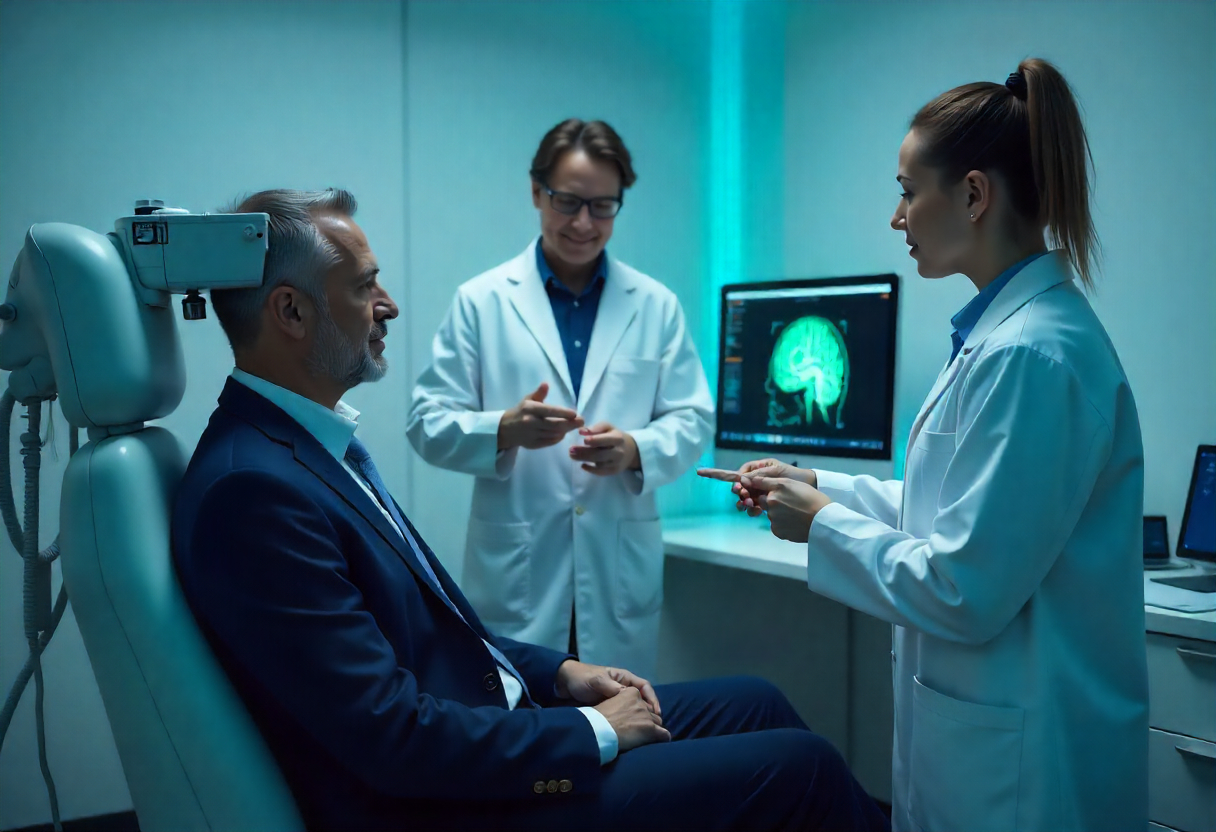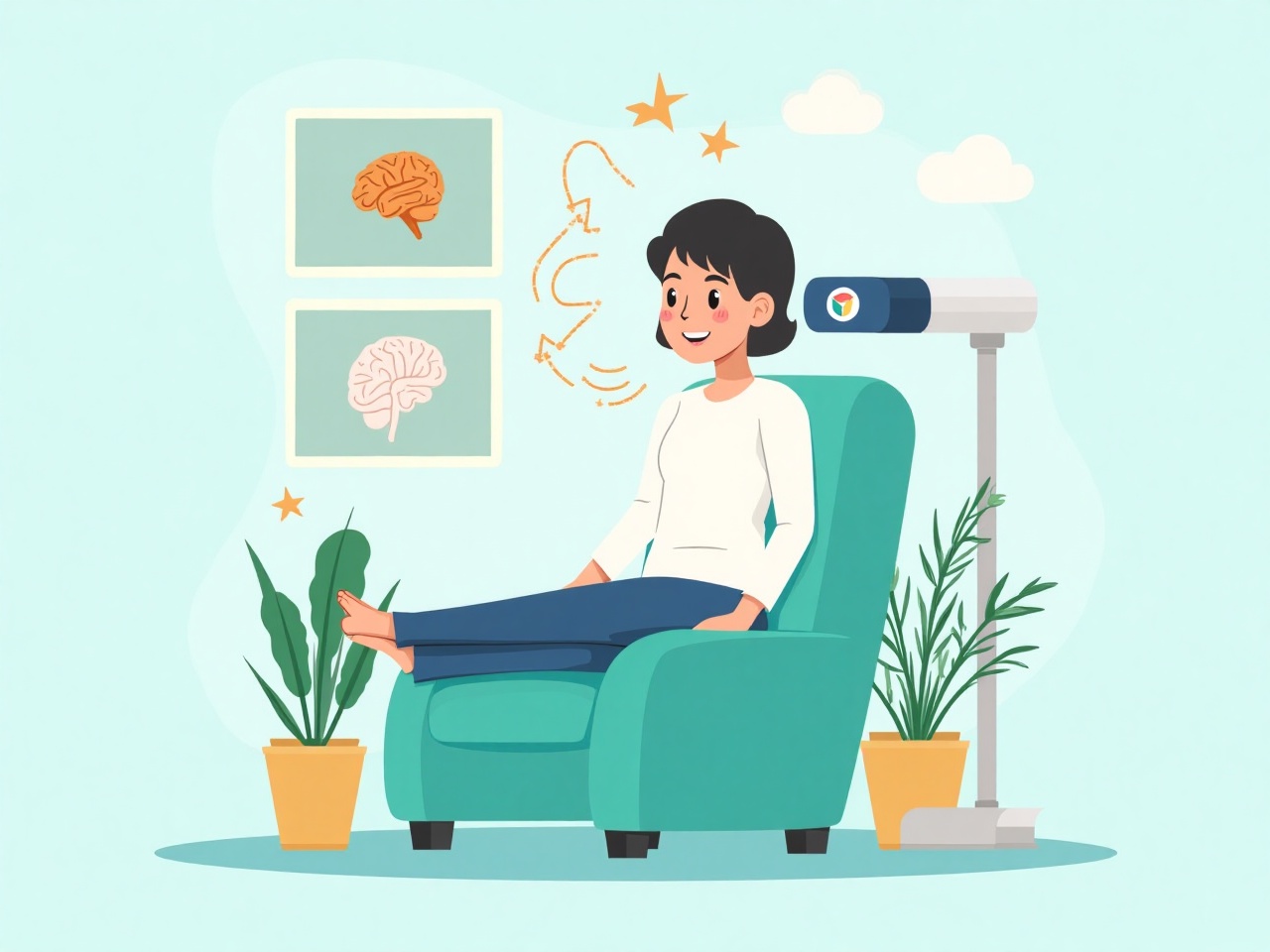How Long Do the Effects of TMS Therapy Last?
For many people struggling with depression, especially when medications don’t work, Transcranial Magnetic Stimulation (TMS Therapy) offers a promising, long-term solution. As a non-invasive depression treatment, TMS is increasingly recognized for not only relieving symptoms—but also for how long those results can last. So how long do the benefits of TMS treatment for depression really last? Will you need ongoing sessions or follow-ups? Let’s break it all down, so you know exactly what to expect from this innovative therapy.

What is TMS Therapy?
TMS Therapy is an FDA-approved, non-invasive treatment that uses magnetic coils to stimulate specific areas of the brain responsible for mood regulation. Unlike medication, which affects the entire body, TMS directly targets the source of depression in the brain, making it a focused and efficient alternative. At Texas Holistic Psychiatry in Kingwood, Texas, TMS is supervised by a TMS Certified Physician and performed by experienced TMS providers. Treatment is personalized for each patient, ensuring the highest possible success rate.
How TMS Works for Depression
During TMS sessions, magnetic pulses are delivered through a coil placed near your scalp. This creates a gentle tapping sensation on your head, which is completely painless for most people. These magnetic fields stimulate underactive brain regions and help reset neural activity related to mood, motivation, and focus. Most patients undergo treatment five times a week for four to six weeks, depending on their specific diagnosis and needs.
How Long Do TMS Results Last?
For most patients, the effects of TMS therapy last anywhere from six months to a year, and in many cases, even longer. Some people experience improvements after TMS that last for several years with no further treatment needed. However, depression is a complex condition. Some individuals may find that their symptoms gradually return over time, especially in high-stress situations or if their depression is chronic or recurrent. In such cases, booster sessions or TMS maintenance therapy can help

What Affects How Long TMS Therapy Lasts?
Several factors can impact the longevity of your results after completing TMS treatment for depression:
- Severity of your depression: Individuals with moderate to severe depression may need longer treatment or occasional maintenance sessions.
- Lifestyle and wellness habits: Getting quality sleep, exercising regularly, managing stress, and eating well can extend the benefits.
- Support system: A strong support system for TMS patients helps with ongoing emotional resilience
- Therapy and follow-up care: Using TMS therapy alongside talk therapy or counseling enhances long-term outcomes.
- Overall health and medical history: Physical and neurological health may also influence results.
What Are TMS Maintenance Sessions?
TMS maintenance sessions, also known as booster sessions, are occasional follow-up treatments provided after the initial course of TMS has been completed. They’re designed to help keep depressive symptoms from returning and are typically done weekly, monthly, or only as needed. Not everyone needs maintenance, but at Texas Holistic Psychiatry, we monitor each patient and recommend them only when beneficial.
Signs You May Need a Follow-Up TMS Session
If you’ve already completed your full cycle of TMS but start noticing symptoms creeping back, it might be time to schedule a booster session. Watch out for signs like:
- Feeling low or emotionally flat again
- Trouble sleeping or increased fatigue
- Loss of motivation or interest in daily life
- Difficulty concentrating
The good news? Most patients who respond well to their first course of TMS also respond positively to follow-ups.
TMS vs Other Depression Treatments How Long Do Results Last?
Unlike medications, which must be taken daily and often indefinitely, TMS offers lasting effects after a set number of sessions. Traditional antidepressants can take weeks to start working, and their effects fade quickly once stopped. TMS results tend to last much longer with no ongoing side effects. Compared to ECT (electroconvulsive therapy), which is more invasive and often requires sedation, TMS is much gentler and has no memory loss risk. That’s why so many people in Kingwood, Texas are choosing TMS as a more sustainable, science-backed approach.
How to Make Your TMS Results Last Even Longer
- Complete the full course of treatment
- Stay active with regular exercise
- Sleep 7–8 hours every night
- Avoid alcohol and recreational drugs
- Continue therapy if recommended
- Prioritize stress management and emotional wellness
- Stay connected with your provider for ongoing support
Your long-term mental health matters, and we’re here to help you maintain it every step of the way.
Final Thoughts: Is TMS a Long-Term Solution?
Yes — for many people, TMS therapy provides lasting relief that is not only effective but also free from the side effects of daily medication. And if symptoms do return, booster sessions are available and just as effective. Whether this is your first time exploring depression treatment options, or you’re looking for an alternative to medication, TMS Therapy could be the answer you’ve been waiting for.
Related Post
-
 Does TMS Therapy Improve Sleep for People with Depression?
Does TMS Therapy Improve Sleep for People with Depression? -
 How Long Do the Effects of TMS Therapy Last?
How Long Do the Effects of TMS Therapy Last? -
 TMS vs. Medication: Which Depression Treatment Option Is Right for You?
TMS vs. Medication: Which Depression Treatment Option Is Right for You? -
 How to Prepare for Your TMS Therapy Session
How to Prepare for Your TMS Therapy Session -
 What Is TMS Therapy and How Does It Work for Depression?
What Is TMS Therapy and How Does It Work for Depression? -
 How Lifestyle Changes Can Enhance Your Mental Health Treatment | Holistic Psychiatry Kingwood
How Lifestyle Changes Can Enhance Your Mental Health Treatment | Holistic Psychiatry Kingwood -
 How to Support a Loved One with Depression
How to Support a Loved One with Depression -
 5 Proven Benefits of TMS Therapy for Mental Health
5 Proven Benefits of TMS Therapy for Mental Health -
 Signs You Might Have Treatment-Resistant Depression (And What to Do About It)
Signs You Might Have Treatment-Resistant Depression (And What to Do About It) -
 What is TMS Therapy? A Beginner’s Guide to Non-Invasive Depression Treatment
What is TMS Therapy? A Beginner’s Guide to Non-Invasive Depression Treatment

